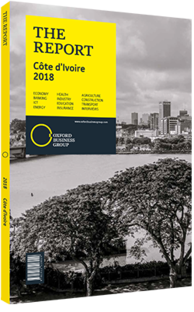Efforts under way to strengthen Côte d'Ivoire's mining sector
The civil conflict in the early 2000s led to a slowdown in investment and resulted in much of the country’s infrastructure to fall into disrepair. However, government programmes have since began to reverse the situation. One of the main strategies to make the industrial sector more resilient, and increase its participation in the country’s GDP, was the implementation of National Restructuring and Upgrading Programme (Programme National de Restructuration et de Mise à Niveau, PNRMN).
The scheme, launched in 2014 and expected to run until 2018, aims to channel CFA152bn (€228m) into the industrial sector. Its main objectives are to make existing industrial segments more competitive, but also to attract new international firms to set up production capacity in the country. Its efforts will focus on a total of 150 firms through the provision of instruments like technical training, upgrading of manufacturing processes and support to companies in obtaining certifications for their products.
The overarching 2016-2020 National Development Plan (Plan National de Développement, PND), a government strategy aimed at turning Côte d’Ivoire into an emerging economy, will also have effects on the industrial sector. One expected result is to increase the weight of the country’s industrial sector from 25% GDP in 2016 to as much as 40% by 2020.
This ambitious goal, however, will require mobilisation of important financial resources, coordination between government and international bodies, and more importantly, making the country’s overall investment rules more business friendly.
Competitive Environment
The need to strengthen the sector goes beyond compensating for the difficulties of previous years, as the Ivorian economy becomes increasingly globalised, especially through its participation in international trade agreements. Three trade arrangements in particular have progressively exposed Ivorian industries to more competition. The African Growth Opportunity Act, signed into law in 2000, aims to tighten trade and investment relations between the US and sub-Saharan countries, which had the effect of the lowering trade barriers.
Similarly, trade conditions between West African countries and the EU have also been strengthened through a series of recent economic partnership agreements, which aim to move the bulk of trade between the EU and emerging economies from commodities to value-added processed goods. The agreements will allow EU countries to export 75% of its finished goods under duty-free conditions into ECOWAS countries, and in return ECOWAS economies will be allowed export 100% of their finished goods duty-free into EU countries.
Local Actors
Additionally, opportunities for Côte d’Ivoire to export its manufactured goods are increasingly opening closer to home. Under the ECOWAS common external tariff system, trade conditions are being harmonised between countries belonging to the regional block. In order to take advantage of all these opportunities and mitigate the risks that domestic manufacturers might be exposed to because of trade liberalisation, efforts to have a more robust industrial sector are key for the country’s long-term development goals.
For the sector to create jobs, manufacturers will need to adapt to the international competition levels that are required under liberalised trade relationships. “UEMOA has been trying to establish an accreditation, standardisation and quality promotion system across the bloc for years,” Kwabena Barning, the Francophone West Africa regional managing director of SGS, a company offering inspection and verification services, told OBG. “However, economic discrepancies between member states make finding common ground difficult, as was the case with Rule 14 concerning maximum axle load.”
You have reached the limit of premium articles you can view for free.
Choose from the options below to purchase print or digital editions of our Reports. You can also purchase a website subscription giving you unlimited access to all of our Reports online for 12 months.
If you have already purchased this Report or have a website subscription, please login to continue.

